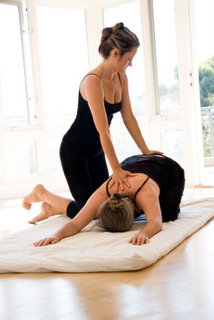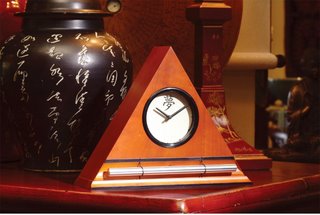|
 Secure Site
Secure Site
|
 |
Archive for June, 2011
 happiness Take delight in the good fortune of others to create more happiness for yourself.
The Dalai Lama speaks of mudita as a kind of “enlightened self-interest.” As he puts it, there are so many people in this world that it’s simply reasonable to make their happiness as important as your own; if you can be happy when good things happen to others, your opportunities for delight are increased six billion to one!
This is a teaching I try to keep in mind throughout the day. I recently went to collect my weekly box of produce from the community-supported agriculture program I belong to. I was looking forward to buying a dozen eggs laid by the farm’s grass-fed, free-range chickens. These eggs are delicious, and quite precious, because only a limited number of them are available each week. When I got to the pick-up center, I invited two women who had arrived at the same time I had to get into line ahead of me. As you can probably guess, they bought the last two dozen eggs! I could feel my body beginning to constrict as I realized that I was not going to be able to buy any eggs that day. I smiled and thought to myself, while looking at the two women, “May you really enjoy those eggs.” Remarkably, before I had even completed the thought, I felt my heart center expand and a real sense of joyful energy flow through me.
The root of the Sanskrit word mudita means to be pleased, to have a sense of gladness, or, as Patanjali is often translated, “to be delighted.” Although mudita is often discussed as “empathetic or altruistic joy” in the context of overcoming envy at the good fortune of others, Thich Nhat Hanh, the Vietnamese Zen master, points out that there is a broader way to think of mudita—one that doesn’t depend on defining the Self as separate from others. In Teachings on Love, he writes: “A deeper definition of the word mudita is a joy that is filled with peace
and contentment. We rejoice when we see others happy, but we rejoice in our own well-being as well. How can we feel joy for another person when we do not feel joy for ourselves?” Feeling joy for ourselves, however, is not always easy to do.
adapted from Yoga Journal by Frank Jude Boccio
 Zen Alarm Clocks and Meditation Timers Now & Zen
1638 Pearl Street
Boulder, CO 80302
(800) 779-6383
Posted in yoga, Yoga Timer, Yoga Timers by Now & Zen
 yoga for taming stress Keep in mind that no matter how well you condition your nervous system, you also need to change the way you perceive stress. You can start this process by practicing svadhyaya, or self-observation. “There is a connection between how you experience a forward bend and how you react to the world,” says Elissa Cobb, a Phoenix Rising Yoga practitioner and the author of The Forgotten Body. Take Paschimottanasana (Seated Forward Bend), a pose that can produce strong sensations in even the most flexible practitioners.
One common response is to ignore sensations and force yourself forward, fighting against your tight hamstrings. Another is to come out of the pose to avoid the challenge entirely. Both strategies are variations on the same theme: fight-or-flight. In all likelihood, they create tense muscles and rapid or held breathing—not to mention a total lack of joy.
Paying attention to how your body and mind react to the “stress” of Paschimottanasana or any pose offers clues about how you typically react to stress in your life. By training yourself to actively observe while staying calm in poses, you’ll be able to do the same thing when difficult sensations, thoughts, or emotions arise in the face of stress. Instead of going into your habitual reaction mode, you’ll notice what’s happening while staying present enough to choose an appropriate response.
When it comes to transforming your own response to stress, it’s tempting to search for that one pose or breathing exercise that will work its magic. But there isn’t one magic pose. The process is a gradual exploration rather than an easy solution. “If you’re practicing yoga every day, you’re preparing for what life brings. You don’t have to have a strategy for what yoga technique you’ll use in a difficult situation.” According to Weintraub, when challenges arrive, they will begin to flow through you but not overwhelm you. “When life hits, it doesn’t explode or roll over us. We’re not so caught up in the stress of it, but we’re present for it.”
This is the real story of how yoga can help you manage stress. It doesn’t just provide ways to burn through stress or escape from it. It doesn’t only offer stress-reduction techniques for anxious moments. It goes deeper, transforming how the mind and body intuitively respond to stress. Just as the body can learn a new standing posture that eventually becomes ingrained, so the mind can learn new thought patterns, and the nervous system can learn new ways of reacting to stress. The result: When you roll up your mat and walk out the door, you can more skillfully take on whatever life brings.
adapted from Yoga Journal, by Kelly McGonigal
 Digital Yoga Timers with Gentle Chime Now & Zen
1638 Pearl Street
Boulder, CO 80302
(800) 779-6383
Posted in yoga, Yoga Timers by Now & Zen
 yoga child's pose To begin changing the way you react to stress, you’ll need to understand how it typically affects the body. If your mind interprets a stressful event as an emergency threat, it triggers an immediate response in the autonomic nervous system. Your stress response kicks in and activates the sympathetic nervous system (SNS). Your body is flooded with hormones like cortisol and norepinephrine, which heighten the senses, increase heart rate and blood pressure, and focus the brain’s activity. The parasympathetic nervous system (PNS), which is responsible for physical relaxation and emotional calm, becomes overwhelmed by this sympathetic response. With the sympathetic nervous system in charge and the parasympathetic overwhelmed, you are primed to respond with energy and focus, but also with anger, anxiety, and aggression.
Humans developed this primal reaction, known as fight-or-flight, so they could effectively fight off or flee from life-threatening danger. This important survival mechanism is useful when you need to slam on the brakes to prevent a car accident or run away from an attacker. But it’s overkill for most of the conflicts and challenges we face day to day.
While it’s easy to view life’s hassles as a threat to your expectations, sense of control, or ideals, it’s better for your health to temper that perception and instead see each stressor as a challenge you can handle. Even if an emergency exists entirely in your imagination, or if the threat is only to your feelings, it can still trigger the fight-or-flight stress cycle. Over time chronic stress takes a toll on the body and brain, leading to all kinds of health problems, including insomnia, depression, chronic pain, and cardiovascular disease.
adapted from Yoga Journal, Kelly McGonigal
 Tame your stress with a Zen Alarm Clock
Now & Zen
1638 Pearl Street
Boulder, CO 80302
(800) 779-6383
Posted in yoga, Yoga Timer, Yoga Timers by Now & Zen
 yoga For someone like Sue, who easily finds bliss in relaxation but avoids stress, developing the ability to stay present in the midst of difficult situations—but without trying to fight against or escape from them—is key. Rather than trying to hide from challenges, Sue has to learn to believe she can handle them. As Amy Weintraub, founder of LifeForce Yoga Healing Institute and the author of Yoga for Depression, puts it, “Sometimes it’s important to not simply remove ourselves from the stressful situation, but to feel it in our bodies. Acknowledge stress. Meet it. We can stay present without being controlled by it.”
For one of my students, Julie Good, a 38-year-old physician and mother of two young girls, the great teacher was Eka Pada Rajakapotasana (One-Legged King Pigeon Pose). When she first started yoga, it was her least favorite pose. “My strategy was to grit my teeth and tolerate it, tense my whole body, and try to hold myself up off the floor.” Although her resistance was an attempt to avoid the intense sensation in her hip, the effect was quite different. “It was agonizing.”
One day, when Good explained why she hated Pigeon Pose, I encouraged her to stop fighting it. Good says, “I had been trying to protect myself by resisting. I thought, ‘If I let go, it’s going to get worse.’ But I let go, and it got better. When I wasn’t resisting, I learned to breathe into the discomfort.” By staying with the pose, she learned that she could choose to stay in a difficult situation and the discomfort would dissipate.
adapted from Yoga Journal, by Kelly McGonigal
 yoga
Now & Zen
1638 Pearl Street
Boulder, CO 80302
(800) 779-6383
Posted in yoga, Yoga Timer, Yoga Timers by Now & Zen
« Previous Page
Next Entries »
|
|
|
|